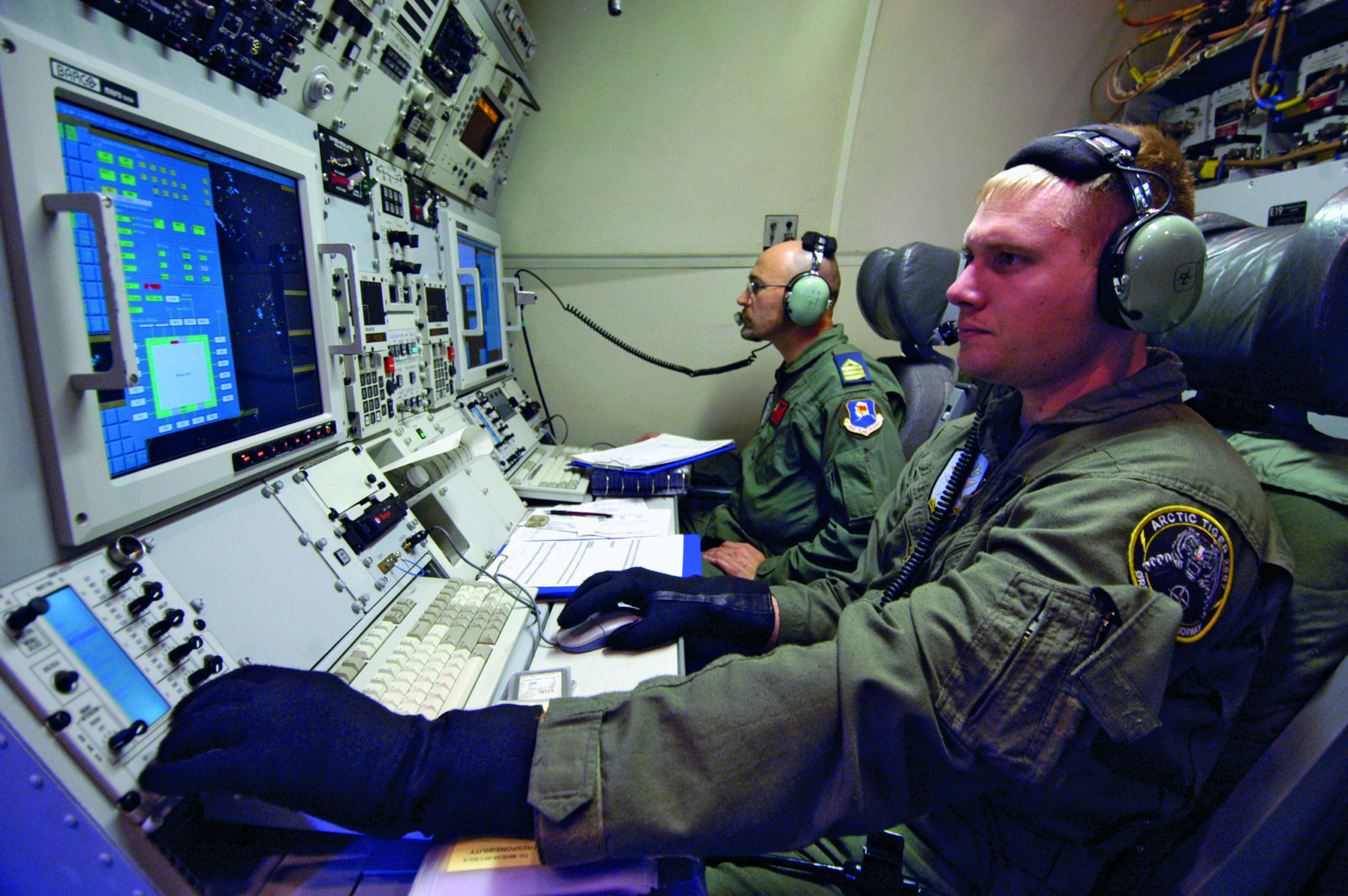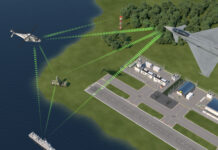“Mode-5” sounds like a devious plan hatched by a James Bond super villain. It is in fact something more prosaic; an Identification Friend or Foe (IFF) protocol.
Historical Context
The need to discern the goodies from the baddies is as old as war itself. So-called ‘blue-on-blue’ incidents are tragic both for victim and perpetrator. They are horribly likely to occur and history is replete with examples. The War of the Roses (1455 to 1487) saw the Houses of Lancaster and Tudor pitted against the House of York as both camps fought for the English throne.
The war witness the Battle of Barnet near north London on 14 April 1471. The Houses of York and Lancaster were locked in mortal combat. The Earl of Oxford was leading Lancastrian forces. He was fired upon by the Lancastrians after his own side mistook the emblems on his banner with those of the Yorkists. The debacle plunged Lancasterian morale and help the Yorkists win this decisive battle. 20 days later, the Lancastrians were finally defeated during the Battle of Tewkesbury fought in Gloucestershire, central England. The Lancastrians lost and King Henry VI, the reigning Lancasterian was disposed. Victorious, the House of Tudor would rule England for the next 118 years.
More Recent Incidents
The passage of time has not dulled the blue-on-blue spectre when swords cross. The postmodern era is not shorn of this menace. Fast forward five centuries to when a Royal Air Force (RAF) TORNADO GR4A ground attack jet was downed by a US Army Raytheon MIM-104 PATRIOT Surface-to-Air Missile (SAM). The plane was hit during the opening stages of Operation Iraqi Freedom on 22 March 2003. Both TORNADO crewmembers were killed. The tragic incident was partially blamed on the jet’s faulty IFF system.
IFF has been intrinsic to air power since the Second World War. Germany, the UK and the US all deployed IFF equipment to help keep their aircraft safe from their own side’s itchy triggers. The RAF fielded one of the first IFF systems. Employing elegant simplicity, the apparatus equipped an aircraft with a radio receiver. By the eve of the war, the RAF had built a chain of radars along much of England’s southern and eastern coasts. These could look circa 86 nautical miles/nm (160 kilometres) outwards over much of continental Europe’s Atlantic coast.
If the Luftwaffe was assembling formations of bombers en route to targets in the UK, these Chain Home radars would detect them. This early warning gave RAF fighters enough time to scramble and reach the best place in the sky to intercept the bandits. There was just one problem: Chain Home radars could not distinguish RAF and Luftwaffe planes.
SSR
IFF was the solution. When the RAF aircraft’s IFF transponder detected a Chain Home radar pulse it sent a coded reply. This would tell the radar operator that the target they had detected was friendly. This beautifully simple, yet effective approach formed the template for future IFF systems. Today, these systems retain those basic principles.
For understandable reasons, IFF interrogators equip an array of platforms, typically any tasked with engaging hostile military aircraft. This includes fighters, SAMs, radars, Airborne Early Warning (AEW) aircraft and vessels performing anti-air warfare. IFF transponders equip military aircraft and warships to indicate that they are friendly.
Air Traffic Control
One IFF spin-off was Secondary Surveillance Radar (SSR). The development of IFF technology and SSR are entwined. Secondary surveillance radar plays a key part in Air Traffic Control (ATC). Civilian aircraft are equipped with a radio transponder. The SSR will send out a request for the aircraft’s identity, known as an interrogation, on a frequency of 1.030 Gigahertz/GHz. The aircraft will receive the interrogation and send a reply, known in the trade as a ‘squawk’.
The squawk is transmitted back to the SSR on a frequency of 1.090GHz. It contains details of the aircraft’s identity and altitude. SSR works with a Primary Surveillance Radar (PSR). The PSR sweeps the sky and detects aircraft. These show up on the air traffic controller’s screen tracks. Without SSR, these tracks would be nothing more than lines moving across a radar screen. Information obtained by the SSR is superimposed on these tracks. By fusing together the PSR and SSR information, a controller sees not only an aircraft’s location and heading but also its identity and altitude. Mounting the SSR antenna atop the PSR antenna aids this fusion, as the former will see in exactly the same direction as the latter.
The ATC Advisory Committee
The fact that IFF and SSR are cousins has influenced the trajectory of recent identification friend or foe developments. Mode-5 and Mode-S are new closely related IFF and SSR protocols. Back in 1968, the US Department of Transportation was concerned over increases in air traffic and corresponding increases in the dangers of mid-air collisions. Like many big organisations confronted with a serious problem, they formed a committee. The resulting Air Traffic Control Advisory Committee (ATCAC for short) was tasked with examining future ATC technologies. To aid their quest, they reached out to the Massachusetts Institute of Technology’s Lincoln Labs.
A crucial requirement of the Department of Transportation was that any new technology had to be compatible with the US’ existing ATC infrastructure. Another consideration was that future technologies had to take into account expected growths in air travel in the 1980s and 1990s. One major issue was that squawks could become ‘garbled’: Two aircraft in close proximity squawking at the same time to the same interrogation risked the SSR receiving an unclear reply. This could fox controllers on the identity and altitude of these aircraft, risking potentially disastrous misunderstandings. A way had to be found to ensure that aircraft close together did not give garbled squawks to an SSR interrogation.
Civilian Progress
In 1971, the US Federal Aviation Administration signed a contract with Lincoln Labs to help develop the new ATC infrastructure. Lincoln was to develop a radio frequency beacon system satisfying these needs compatible with existing ATC infrastructure. A solution to the garbled squawks was found. Each aircraft would have a unique identification code, much like a telephone number.
Each interrogation from the SSR would be addressed to a specific aircraft based on its ID code. A reply would only be sent by the transponder the interrogation was addressed to. The approach stopped every aircraft in the vicinity of the SSR replying to every interrogation request. This greatly reduced congestion on the squawk frequencies of 1.090GHz. Crucially, the new transponder protocol could still reply to legacy SSR interrogations.
Mode-S
Design work for this proto Mode-S architecture finished in 1975. Work received additional impetus in 1993. The US Congress mandated Traffic Collision Avoidance Systems (TCAS) for all passenger aircraft carrying over ten passengers. TCAS used Mode-S RF transmissions to ascertain the position of one aircraft relative to another. As all aircraft flying in US airspace had to have TCAS, it began to spread around the world. Given TCAS’ reliance on Mode-S, this correspondingly helped the proliferation of the latter.
In the US, Mode-S formed the basis of the FAA’s Automatic Dependent Surveillance-Broadcast (ADS-B) ATC scheme. Quite simply an aircraft periodically broadcasts its identification, altitude and position using its Mode-S transponder, irrespective of SSR interrogations. SSRs and other aircraft receive these transmissions and their accompanying information. ADS-B makes good several of the TCAS’ inaccuracies: Position information articulated by ADS-B is derived from the aircraft’s Global Navigation Satellite Signal (GNSS) receiver. Although the brief for Mode-S emphasised the use of existing infrastructure, airports and ATC centres are equipped with ground stations to receive these transmissions. ADS-B is now proliferating around the world and with it Mode-S.
Regarding the aircraft’s unique address, blocks of codes are allocated to each International Civil Aviation Organisation member state. The country will then allocate specific codes to aircraft registered there. There is little chance of the world’s air fleet running out. The 24-bit coding used ensures that over 16.7 million codes are available. If the aircraft changes the country where it is registered, its address will correspondingly change.
Mode-5
In a nutshell, Mode-5 is a secure version of Mode-S. It is mandated throughout NATO via the alliance’s Standardisation Agreement-4193 (STANAG-4193). Unlike Mode-S, Mode-5’s interrogations and squawks are encrypted. As a written statement supplied by NATO notes “Mode-4 was limited to identifying friendly aircraft by receiving the right reply to the corresponding Mode-4 interrogation”. Athanasios Chouliaras, an aerospace and defence consultant, says Mode-5 “replaces the legacy Mode-4 IFF, which uses Morse code-like signals for military identification”.
An article published on the Tel Instrument Electronics Corporation website gives a summary of Mode-5’s development and adoption. Mode-4 was introduced in the 1960s. It was originally called IFF Mk.XII. As it used US Mode-4 cryptography it became known as Mode-4 IFF. This IFF standard was adopted throughout NATO and several allied nations. In 1995, the US Joint Chiefs of Staff ordered a new IFF protocol to replace Mode-4. Unsurprisingly, this became known as Mode-5. In 2002 NATO ratified STANAG-4193. This mandated Mode-5 throughout NATO.
The development of Mode-5 was led by the US Navy. The navy was in turn assisted by an international working group of NATO nations. Several companies have since become involved in the design, development and manufacture of Mode-5 IFF systems. Alongside the Tel Instrument Electronics Corporation, these companies include BAE Systems, Hensoldt, Leonardo, Raytheon, Sagetech Avionics, Telephonics and Thales. Although the US Navy was midwife to Mode-4’s birth, responsibility for the protocol passed to the US Air Force. Although Mode-4 is no longer certified for NATO use several allied nations like India and South Africa continue to use the protocol. Hence, it continues to be supported for those nations. The air force also ensures all Mode-5 hardware and software meets the requisite STANAGs.
Mode-5’s Traits
Mode-5 expands the information carried by the squawk vis-à-vis Mode-4: “The new Mode-5 system constitutes a limited datalink system. Not only is it able to identify friendly aircraft, but it also receives extra information” on an aircraft’s identity and position, says NATO’s statement. As Tom Furey, Chief Executive Officer of Sagetech Avionics notes: “Mode-5 provides better performance and security than Mode-4, and added two-way data transfer using secure waveforms, containing encrypted GNSS and other flight information about the interrogated aircraft.”
It also provides a step-change in terms of performance: “Mode 5 … allows interrogators to identify friendly aircraft IFF systems at longer ranges (compared to Mode-4), using a secure, encrypted code.” This range improvement eliminates another Mode-4 shortcoming, says Mr. Chouliaras. The previous system suffered limitations identifying friendly aircraft at long distances. This was especially acute when flying in close formation. Usefully, by virtue of its architecture, Mode-5 is interoperable with Mode-S. This ensures military aircraft can travel with ease through civilian controlled airspace.
Encryption is at the heart of Mode-5. Sagetech is involved in the manufacture of Mode-5 IFF transponders. Mode-5 IFF systems need cryptographic computers to secure the interrogations and squawks: “The cryptographic computer is loaded with codes that change every few seconds … and provides the parameters of encryption and decryption to the transponder,” says Mr. Furey. Mode-4 used to change its code once a day. As the coding for Mode-5 changes every few seconds, this is much more secure, argues Mr. Chouliaras. This rapid change of coding is achieved through the use of Time of Day (TOD) authentication. Mode-5 cryptographic equipment is available from General Dynamics, Hensoldt and Raytheon.
Additional Equipment
Other equipment required for Mode-5 transponders includes a link to the aircraft’s GNSS receiver. Aircraft also need dorsal and ventral antennas to ensure full spherical Mode-5 coverage. This is important to guarantee that any interrogator can receive IFF squawks regardless of the aircraft’s aspect relative to the interrogator. For example, an AEW aircraft at a higher altitude may be sending the interrogation. This would be received by another aircraft’s dorsal antenna and replied to using the same. Conversely, an interrogation may be received from a ground-based air surveillance radar. This would be received and replied to using the ventral antenna.
Compatibility
The Mode-5 IFF protocol is not compatible with Mode-4. As such, all NATO platforms needing to carry an IFF transponder must be physically upgraded with new Mode-5 IFF equipment. Mode-4 was officially ‘decertified’ on 30 June 2020. This now makes Mode-5 the only standard IFF system in NATO service. NATO has upgraded its fleet of Boeing E-3A SENTRY AEW planes with Mode-5 interrogators, said its statement. Beyond this, responsibility for rolling out Mode-5 equipment across platforms falls to individual NATO members. NATO thus shies away from predicting when the implementation of Mode-5 will be complete: “It would be premature to say when the process will be complete across the Alliance, but work is underway.”
Mode-5 is an unsung, yet vital, part of how NATO reduces the danger to its assets from blue-on-blue incidents. The alliance emphasised in its statement that “Mode-5 IFF is a fundamental component of how NATO provides security to its members. It is a significant demonstration of the allies’ collective commitment to safeguarding NATO airspace.”









